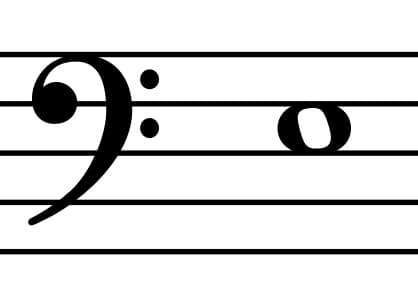Myths about teaching can hold you back
- Year 10
- AQA
Creating a 16-bar melody
I can write an effectively structured 16-bar melody and chord sequence.
- Year 10
- AQA
Creating a 16-bar melody
I can write an effectively structured 16-bar melody and chord sequence.
These resources will be removed by end of Summer Term 2025.
Switch to our new teaching resources now - designed by teachers and leading subject experts, and tested in classrooms.
These resources were created for remote use during the pandemic and are not designed for classroom teaching.
Lesson details
Key learning points
- A typical 16-bar classical melody has a contrasting section of harmony and melody in bars 9-12.
- This usually ends with chord V, creating an imperfect cadence.
- The melody and harmony in bar 13-16 typically copy bar 5-8, ending with a perfect cadence.
- An anacrusis is an interesting melodic feature that can help to make a melody sound more unique and interesting.
Keywords
Tonic - chord I, which feels finished
Dominant - chord V, which feels unfinished
Imperfect cadence - where part of a chord sequence finishes on the dominant chord (V), which feels unfinished
Anacrusis - when a melody starts before the downbeat (beat 1)
Common misconception
There are no 'rules' for writing a chord sequence.
While to some extent this is true, in Western classical music there are very typical patterns that are used very regularly. These include the position of perfect and imperfect cadences, and what the chords do throughout the 16 bars.
To help you plan your year 10 music lesson on: Creating a 16-bar melody, download all teaching resources for free and adapt to suit your pupils' needs...
To help you plan your year 10 music lesson on: Creating a 16-bar melody, download all teaching resources for free and adapt to suit your pupils' needs.
The starter quiz will activate and check your pupils' prior knowledge, with versions available both with and without answers in PDF format.
We use learning cycles to break down learning into key concepts or ideas linked to the learning outcome. Each learning cycle features explanations with checks for understanding and practice tasks with feedback. All of this is found in our slide decks, ready for you to download and edit. The practice tasks are also available as printable worksheets and some lessons have additional materials with extra material you might need for teaching the lesson.
The assessment exit quiz will test your pupils' understanding of the key learning points.
Our video is a tool for planning, showing how other teachers might teach the lesson, offering helpful tips, modelled explanations and inspiration for your own delivery in the classroom. Plus, you can set it as homework or revision for pupils and keep their learning on track by sharing an online pupil version of this lesson.
Explore more key stage 4 music lessons from the Fundamentals of composition: extended unit, dive into the full secondary music curriculum, or learn more about lesson planning.

Equipment
DAW or notation software, keyboard or other suitable instrument as a composition tool.
Licence
Prior knowledge starter quiz
6 Questions
Q1.What is an interval?
Q2.Which two of these are conjunct intervals?
Q3.If using disjunct movement in a melody, you should jump between what?
Q4.__________ phrasing is also known as a ‘question’ and ‘answer’ structure.
Q5.Which of these is not a feature of balanced phrasing?
Q6.What is this note?




